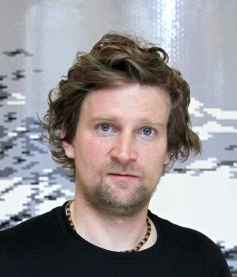
Miha Strukelj
The Slovenian artist Miha Štrukelj is drawn to the ambiguous nature and confines of space. Space is understood by the artist as both the physical space of the canvas - or other support medium - as well as geographical space. Exploring the process of creating a painting or drawing, he leaves empty patches and shows underlying content. This has led him to experiment with how painting and drawing function in physical space, resulting in the construction of large-scale installations. Focusing on urban landscapes, he creates a new sense of place by combining different real or fictitious elements, or by abstracting real topologies.
Miha Strukelj was born in 1973 and was largely inspired creatively by the 1990s. A collective of artists working in the United Kingdom, who came to be known as the Young British Artists, defined the artistic culture of the 1990s. A number of the YBAs attended the Royal College of Art and Goldsmiths in London, and were favoured by the ‘super collector’ of the time, Charles Saatchi. The most renowned member of the group is Damien Hirst, and other members included Chris Ofili, Tracey Emin, Marc Quinn, Gavin Turk, Sarah Lucas and Sam Taylor-Johnson (born Sam Taylor-Wood). The YBAs became known for their use of shock tactics and sensationalism, alongside their use of throwaway materials, wild lifestyles and an outlook that was rebellious yet enterprising.
A trained painter, he begins each work from a painter's perspective: with a grid, the most underlying element of paintings and drawings. By exposing different elements of the work process - the grid, preliminary sketches, the under painting, and even the untouched canvas itself Strukelj creates a complex heterogeneous 'organism'. In paintings, exposed elements and blank fields have the effect of interruptions and distortions, while re-enforcing the materiality of the painting itself. Thus, the viewer's perception and concept of painting is challenged. At the same time, Strukelj's technique underlines the fragility inherent to all of his work, which allows the spectator to go beyond grid and fragments, to explore the scenes and motives depicted.





